Pasubio
1970s to the present day
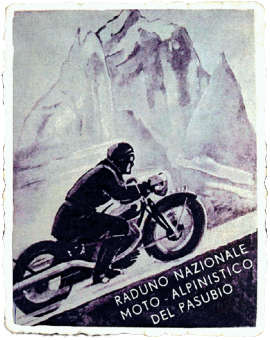
Setting aside commemorative badge images of the 1970 Pasubio meetings, information and photos from these gatherings are as rare as politicians who live up to their campaign promises.
However, I have discovered an amateur video of the 1970 meeting and although the images are poor, it is nonetheless a testimony of the time:
www.youtube.com/watch?v=nWYgEsTlL4c
In the absence of decent and interesting records of these meetings, I have no alternative but so as not to disappoint you, I'd like to share with you a brief portrait of Italian motorcycling in the 1970s.
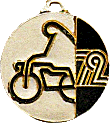
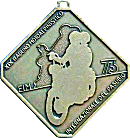
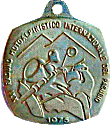
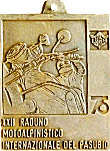
Pasubio rally badges of the 1970s
To start with, one important change took place at this time. The Pasubio meetings of the 1970s abandoned the original route leading almost to the mountain peak; picturesque though it was, and which had been the outstanding charm of the meetings since 1934.
It was decided, for safety reasons, that the final meeting place would henceforth be the 'Sacello Ossario' (ossuary monument), near the 'Valico Pian delle Fugazze'.
'Sacello Ossario' < 2 photos >
What lay behind this major change? The advent of powerful modern machines, nicknamed in Italian 'maximoto', made it vital for the organisers to protect the rallyists against accident risks by defining a course which provided a much safer and less dangerous route.
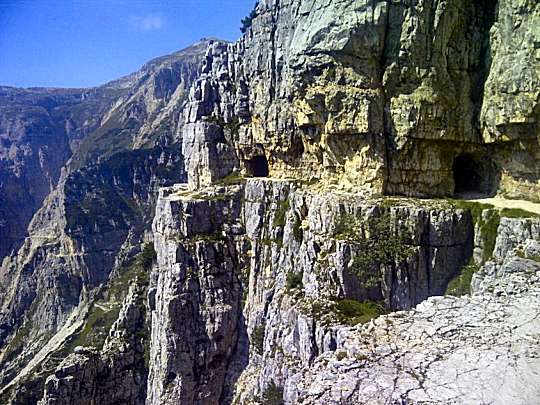
The decision to abandon the initial rally route seems understandable. This old route presented too many potential risks among the most fiery motorcyclists on their sporty and hyper powerful 'maximoto' of the 1970s
Italian motorcycling in the 1970s
Hollywood, that ultimate myth making machine, invented a new film genre in 1969; the road movie. It was born with what was to become a cult classic, 'Easy Rider', a road movie that influenced a generation of 1970s Italian motorcyclists.
This movie became the symbol of a new generation of 'centauri' who were open to new experiences, travel and the lure of the highway.
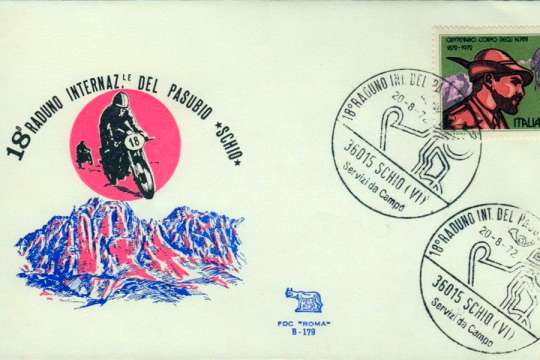
Pasubio 1972 - Postcard of the meeting offered to each participant with the badge.
In the wake of this new movement, old style motorcycling practised up to then by their fathers and grandfathers was swept away and more or less disappeared. The part the motorcycle played in Italian society changed. Its former, economical and mainly utilitarian role now evolved into a leisure activity in its own right.
Japanese invasion - birth of the 'maximoto'
A new era was underway and it was unstoppable, creating huge upheaval. The winds of this revolution had begun to be felt at the end of the 1960s, with the Japanese motorcycling industry's challenge to the European market then largely dominated by Italy, together with lesser contributions from the UK, Germany and Spain.
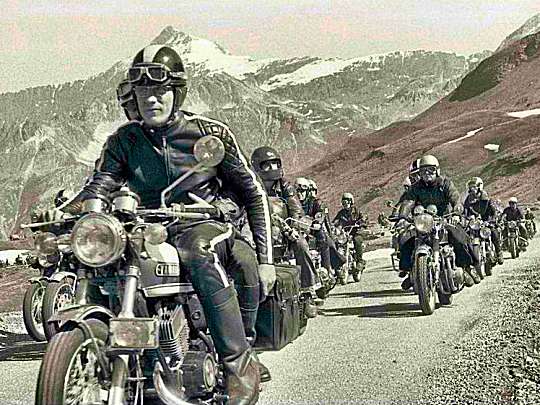
This shot shows the popularity of Japanese motorcycles in 1970 during the Chamois rally
It was not just a question of commercial export 'dumping', it was a real technological challenge, launched initially by Honda. At the time they were the largest manufacturer in the world, introducing amazing new models to the market. The Honda CB 750 Four and Honda CB 500 were both equipped with technical and stylistic innovations such as a 4-cylinder engine and disc brakes, as well as other innovations, and easily outclassed the best Europe had to offer at the time.
Italy tried to counter this Japanese invasion by putting in place 'protectionist' measures such as increasing VAT from 18% to 38% for motorcycles over 500cc.
Faced with aggressive and effective marketing and the competitiveness of Japanese manufacturers with their new ideas, Italian and European brands had no choice but to join the race embarking on new models and improvements.
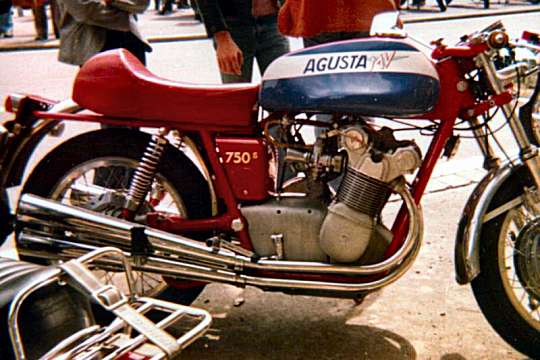
The exclusive and expensive engineering marvel MV Agusta 750 Sport was manufactured from 1970 to 1975. However the total production of this 'Ferrari of motorcycles' was a mere 583 machines
Until then, the predominant motorcycles among Italian riders were either Italian, British or German and they rarely exceeded 650 cc, with classic, but archaic engines and designs.
In the face of this competition European manufacturers began offering 750cc motorcycles with advanced mechanics which gradually evolved into sports versions, triggering the race for ever greater power and ever more sophisticated technologies.
It is from this point that the term 'maximoto' was coined in Italy to describe these larger machines, much in vogue in the 1970s.
Two Italian 'maximoto' of the time
Champion, ambassador and youth idol
Another important parameter in the development of Italian motorcycling during the 1970s was undoubtedly Giacomo Agostini.
His success on the circuit made his name a real talking point in motorcycling circles and many younger people were drawn into the world of the two-wheeler.
Agostini, with 15 world titles and 122 victories, was the first champion to make motorcycles so fantastically popular in Italy. This was especially surprising at a time when the power of the media was nowhere near as pre-eminent as today. His rise to fame in Italy as a symbol for young people, an ambassador for his country, elite athlete and more, proved to be a mass phenomenon.
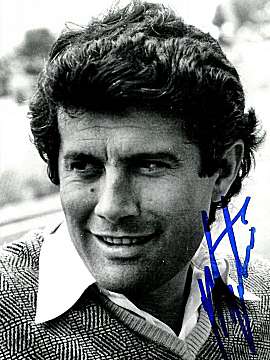
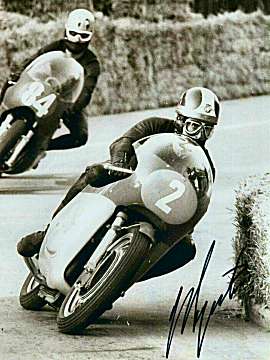
The rally stops once more
In the 1980s, the Pasubio rally continued to enjoy its erstwhile reputation. Nationally and internationally, it was still one of the most important rallies in the Italian touring calendar.
But it was not long before it began to decline as the new decade approached. Fashion had changed and with it rallyists. Massive 'maxi gatherings' of thousands were now out of date. The abandonment of the old route through the mountain was undoubtedly a factor too. Somewhere along the way the rally had lost its charm.
The Pasubio organisation disbanded and once again entered a period of sleep that lasted a decade.
Asleep, but not yet dead

Like a phoenix rising from the ashes, the event resurfaced at the start of the millennium, thanks to the Historic Club Schio, a regional club founded in 1991 which brings vintage vehicles enthusiasts together.
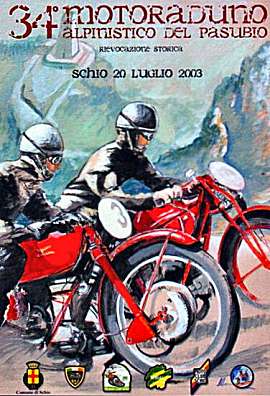
By agreement with MC Schio, this club took over the organisation of the event, offering it in the form of a historical gathering which was dedicated and open to all vintage motorcycles which had originally taken part in previous meetings.
Success was immediate.
In July 2003, on the occasion of the 34th Pasubio rally, participants took part on 450 vintage motorcycles; exceeding the organiser's wildest expectations and in 2005, the number of entrants reached a thousand.
For a few years the rally became a historical gathering dedicated and open to vintage motorcycles.
Handed over back to MC Schio
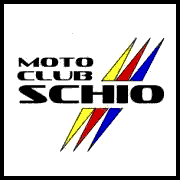
Nevertheless, after these few meetings reserved only for vintage machines, it was decided that the Pasubio rally should once again become a modern event open to all.
The Historic Club Schio handed back the responsibility for organising the 37th meeting to MC Schio.
Since then, under the banner of the two local clubs, the Pasubio rally continues to go from strength to strength.
Times have certainly changed, and whilst it no longer enjoys the same kudos it revelled in for around 40 years from the 1930s to the 1960s, it still ranks very high in the 'go to' summer list of dates for Italian and international rallyists.
This can be readily seen by these images taken during meetings held in the past decade.
And by this video shot more recently at the 2016 meeting.
Live your dreams, travel while you can
If you hate crowds and run away from mass motorcycling gatherings, don't even think about heading for Schio. This kind of event is most definitely not for you.
But if you love Italy, its people, their language, effusive nature, and cuisine that warms the soul, then keep in mind the idea of taking part someday.
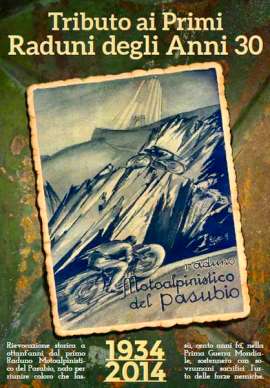
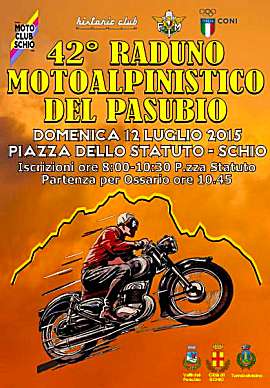
After all, why not? Life is just a dream around which we build the walls of reality. As for life, it is always too short. There's no time to waste. We are all only passing through as 'tenants of existence'.
When one leaves this world, one only takes memories and nothing else, as did those poor soldiers from another era who tragically perished on the rocky mountains of Pasubio with much life still to live.
One day or another this pandemic which constrains all of us will hopefully just be a bad memory. The thirst for travel and adventure will reappear like a rainbow after a storm.
Perhaps then you will feel the call of the mountains from the Pasubio in the heart of the Little Dolomites.
- Jean-Francois Helias
Visit the Italian website www.motoradunidelpasubio.it/.